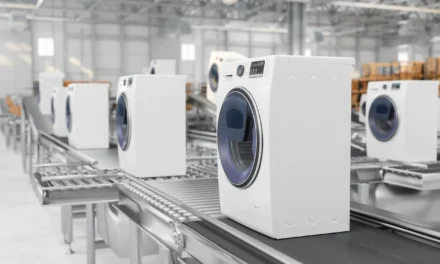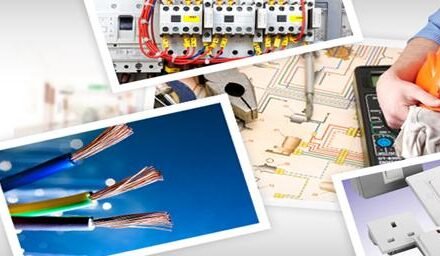Electric motors play a critical role in the automation and efficiency of industrial machinery. They are central to a wide variety of applications across industries, enabling machines and systems to operate with precision, speed, and minimal human intervention. Here’s how electric motors contribute to automation and efficiency in industrial settings:
1. Powering Automated Systems
Electric motors drive automated systems such as conveyor belts, robotic arms, and assembly lines. These systems can operate continuously, reducing the need for manual labor and improving overall productivity. By providing consistent and reliable motion, electric motors ensure smooth, uninterrupted operations in factories and manufacturing plants.
- Example: In automotive manufacturing, robotic arms powered by electric motors are used for tasks like welding, painting, and assembling components, speeding up production and improving precision.
2. Energy Efficiency and Cost Savings
Industrial motors, especially those using advanced technologies like variable frequency drives (VFDs), optimize energy consumption by adjusting motor speed according to the load demand. This ability to regulate motor speed helps reduce energy waste and lower operational costs. For example, motors driving pumps or fans can slow down when demand is low, saving energy compared to running them at constant full speed.
- Example: In HVAC systems, motors with VFDs adjust fan speeds based on real-time environmental conditions, improving energy efficiency without sacrificing system performance.
3. Precision and Control
Electric motors offer precise control over speed, torque, and positioning. Servo motors, stepper motors, and DC motors are often used in applications where accuracy is critical, such as CNC (Computer Numerical Control) machines, 3D printers, and automated assembly lines. These motors provide feedback mechanisms (e.g., encoders) to ensure accurate and repeatable motion control.
- Example: CNC machines use stepper or servo motors to control the movement of cutting tools with high precision, allowing for the production of complex components.
4. Increased Throughput and Productivity
Electric motors enable machines to operate faster and more efficiently, increasing throughput and overall productivity. Motors power industrial machinery at higher speeds, leading to faster production cycles and the ability to meet higher demand. Automation powered by motors also reduces downtime and increases operational availability.
- Example: In packaging industries, electric motors power high-speed filling, capping, and labeling machines, increasing packaging throughput and reducing the time required to prepare goods for shipment.
5. Reduced Labor Costs and Safety Risks
Automation powered by electric motors reduces the need for manual labor, which can lower labor costs and minimize human errors. Additionally, by automating dangerous tasks, the need for human workers to be in hazardous environments is significantly reduced, improving workplace safety.
- Example: In the mining industry, electric motors drive equipment like drills, crushers, and transport vehicles, reducing the need for human workers to be exposed to dangerous underground conditions.
6. Adaptability to Different Applications
Electric motors are highly adaptable to a wide range of industrial applications. They can be customized for various power requirements, from small motors for office equipment to large motors for heavy machinery. Their ability to work with diverse systems makes them an essential component for flexible manufacturing processes and quick changes in production lines.
- Example: In food processing, electric motors power mixers, grinders, and ovens, allowing the same equipment to handle various ingredients and production volumes, enhancing flexibility in production.
7. Reduced Maintenance Needs
Modern electric motors, especially those with brushless designs and advanced cooling systems, require less maintenance compared to traditional machinery. Their reliability and longevity reduce downtime caused by breakdowns or maintenance, making them ideal for continuous, high-demand industrial environments.
- Example: In automated warehouses, motors drive automated guided vehicles (AGVs), which require minimal maintenance, ensuring continuous operation and reducing operational disruptions.
8. Improved Process Monitoring and Diagnostics
Electric motors, when integrated with sensors and automation systems, provide real-time performance data that can be used for predictive maintenance and process optimization. Monitoring systems can track motor conditions (such as temperature, vibration, and load) and predict when maintenance is needed, preventing unplanned downtime and extending the lifespan of equipment.
- Example: In industrial pumps, sensors can monitor the motor’s performance and detect signs of wear or potential failure, enabling preventive maintenance and reducing the risk of costly breakdowns.
9. Integration with Industry 4.0
In the context of Industry 4.0, electric motors are often integrated with IoT (Internet of Things) technologies and smart sensors, allowing for intelligent and automated operations. These systems enable remote monitoring, diagnostics, and real-time control of industrial machines, further enhancing efficiency and reducing operational costs.
- Example: In a smart factory, electric motors in machinery are connected to a central control system that can automatically adjust settings based on real-time production data, improving the efficiency of the entire manufacturing process.
10. Sustainability and Green Manufacturing
With increasing emphasis on sustainability, electric motors contribute to the reduction of energy consumption and carbon emissions in industrial settings. Energy-efficient motors and systems powered by renewable energy sources help industries reduce their environmental footprint, supporting green manufacturing initiatives.
- Example: Electric motors in wind turbines convert wind energy into electricity, providing a renewable energy source for industrial applications.
Conclusion:
Electric motors are essential to the automation and efficiency of industrial machinery. Their role in enhancing precision, productivity, energy efficiency, cost savings, and safety has made them indispensable in modern industrial processes. By enabling the automation of tasks, reducing labor costs, and improving system control, electric motors contribute significantly to the overall performance and profitability of industrial operations. As industries continue to embrace automation and sustainable practices, the demand for electric motors will likely increase, further driving innovations in motor technology.
Hashtags
#IndustrialAutomation #ElectricMotorsInIndustry #AutomationWithElectricMotors #IndustrialMotorApplications #ElectricMotorSystems #AutomatedMachinery #ElectricMotorsForAutomation #EfficiencyThroughAutomation #ElectricMotorsAndMachines #SmartAutomationWithMotors #EnergyEfficientMotors #ElectricMotorEfficiency #EnergySavingMotors #LowPowerElectricMotors #EfficientIndustrialMotors #ReducedEnergyConsumption #GreenElectricMotors #EnergyEfficientMachinery #SustainableElectricMotors #ElectricMotorsForEnergySavings #ElectricMotorsInManufacturing #MotorsForProductionLines #IndustrialMotorPower #ElectricMotorsInFactories #PoweringManufacturingMachines #MotorDrivenMachinery #ElectricMotorsInProcessing #AutomationInManufacturing #MotorDrivenProduction #ManufacturingWithElectricMotors














